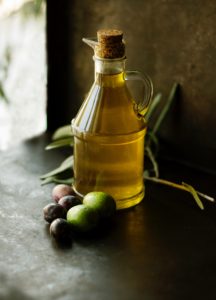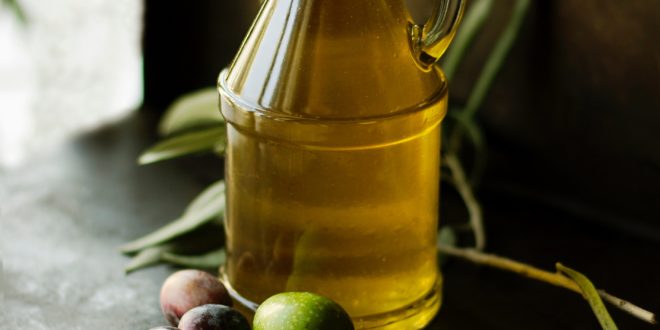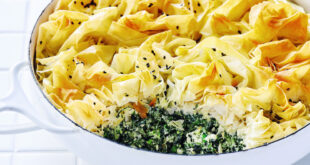 ‘Spoiled for choice’ may not sound like a bad thing yet sometimes choice can be downright stress-inducing – especially when it comes to supermarket shopping. From deciding which of forty brands of toothpaste to buy, to choosing a bottle of tomato sauce, getting our heads around which product is best for health, best for value, and best for purpose can be a minefield. It’s the same when it comes to buying olive oil – an expensive ingredient we really don’t want to be making mistakes about. To take the headache out of it, we’ve put together a quick go-to guide to help you get your head around one of the most potentially delicious products on the shelves.
‘Spoiled for choice’ may not sound like a bad thing yet sometimes choice can be downright stress-inducing – especially when it comes to supermarket shopping. From deciding which of forty brands of toothpaste to buy, to choosing a bottle of tomato sauce, getting our heads around which product is best for health, best for value, and best for purpose can be a minefield. It’s the same when it comes to buying olive oil – an expensive ingredient we really don’t want to be making mistakes about. To take the headache out of it, we’ve put together a quick go-to guide to help you get your head around one of the most potentially delicious products on the shelves.
Know your oils
Extra-virgin olive oil
This oil is made from the first pressing of the olives. It hasn’t been altered by temperature or additives (both of which are used to extract extra olive oil from what’s left over from this first pressing). As a result of its purity, extra-virgin olive oil contains the important anti-oxidants thought to provide the health benefits the oil is known for, and also more of the vitamins and minerals we look for in plant products. This first-press oil is also full of flavour and has a pleasantly ‘peppery finish’. Top-of-the-range of olive oils, extra-virgin is the most expensive olive oil to buy but don’t let that put you off. As it has a lower smoke point (which means it burns at lower temperatures than most other oils) you are unlikely to be using it in large amounts in cooking. Save it, instead, for drizzling over salads, as a dip for bread, or to add, in moderate amounts, to already cooked foods (such as sautéed aubergine and tomato dishes) which will be served at room temperature.
Pure olive oil
While the words on the label may sound enticing, and the price is more affordable, pure olive oil may not be quite what you imagine it is. Unlike extra-virgin olive oil, the ‘pure’ variety has been produced from the residue left over from the first pressing. To help extract oil from the residue, heat or chemicals (sometimes both) have been used in the process. That doesn’t mean you need steer away from it completely, but it is a clue that the oil won’t contain the rich olive oil flavours or all the health benefits you might believe it to. However, because this pure olive oil contains a more neutral flavour, it can be used in dishes that you don’t wish to be overpowered by a strong, distinctive olive oil taste. Think of it as an everyday cooking oil.
Light olive oil
If you’ve been purchasing this oil because you believe it contains few calories, you’re not alone. The deceptive labelling has many shoppers confused. The ‘light ‘, however, refers not to the calorie content of the oil (which is the same as any other fat) but, rather, the flavour of the product. Light olive oil, which is also light in colour, is a refined oil, and without the health benefits promised in its extra-virgin cousin. It does, however, have a higher smoking point which means it is a more suitable olive oil for grilling, roasting and baking.
Buy New Zealand made
Although we can’t be completely sure that what’s on the label of imported olive oils reflects what’s actually in the bottle (New Zealand doesn’t regulate for this) we can be totally confident in our locally produced oil. If a bottle carries the label ‘100% New Zealand Extra Virgin Olive Oil’ alongside the OliveMark® from Olives New Zealand, that’s your guarantee you’re purchasing the genuine article. What’s more, the oil is almost certain to have been pressed on the date stated on the label – and to be in the all-important dark bottle.
Check it out
If New Zealand extra-virgin olive oil is not within your price range, there are still some checks you can put in place when buying the imported varieties. Always look for oil stored in dark bottles (light affects quality). Check the oil is within the expiry date on the label (without preservative, olive oil is best used within one year of pressing), and look for oil with a label that contains information about the oil’s origin and, if possible, grower. Although a deep green colour is a clue that the oil really is extra-virgin, it’s not a guarantee as oil colour varies with varieties. Good luck with your oil hunting!










Join the Discussion
Type out your comment here:
You must be logged in to post a comment.